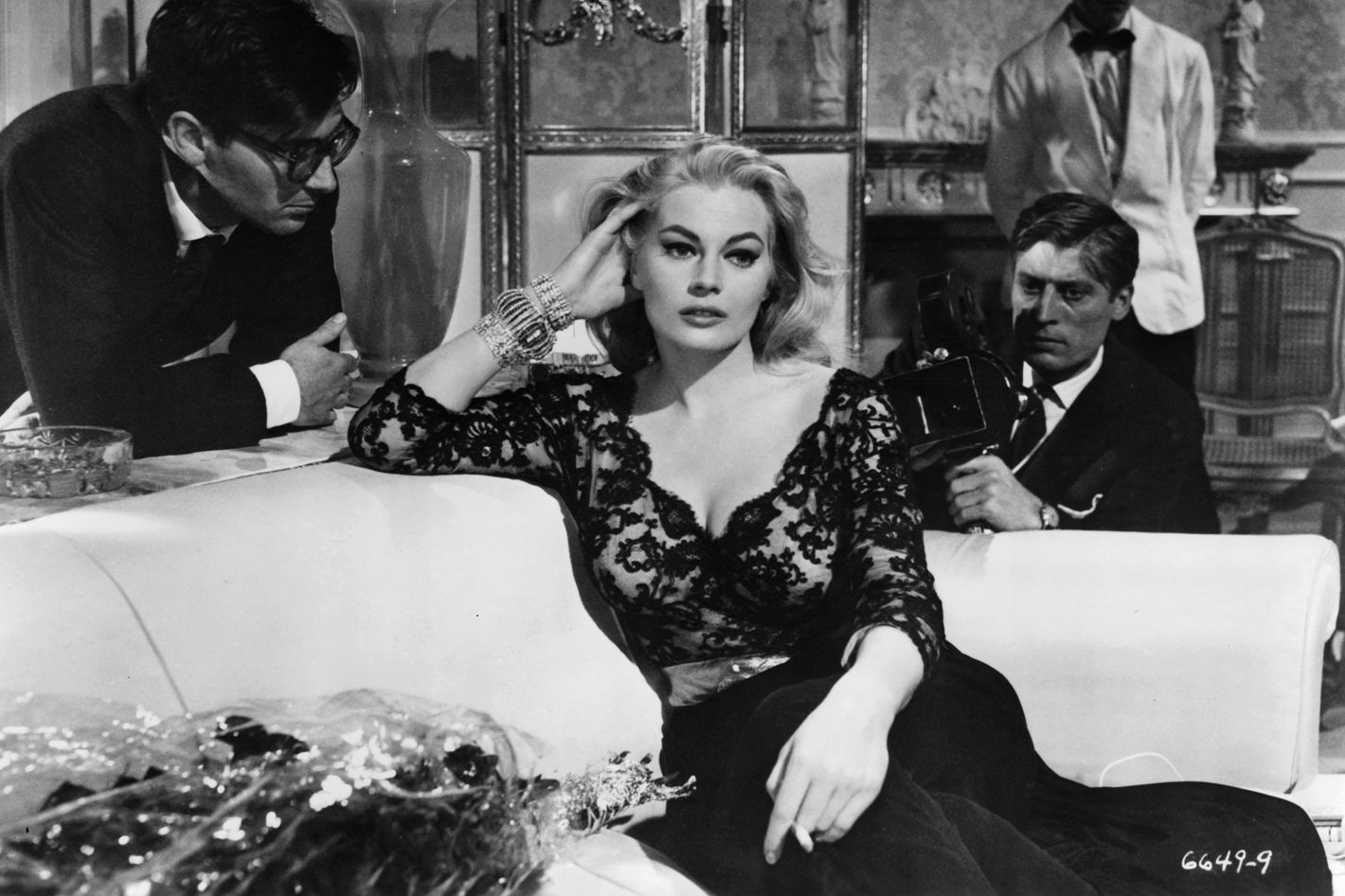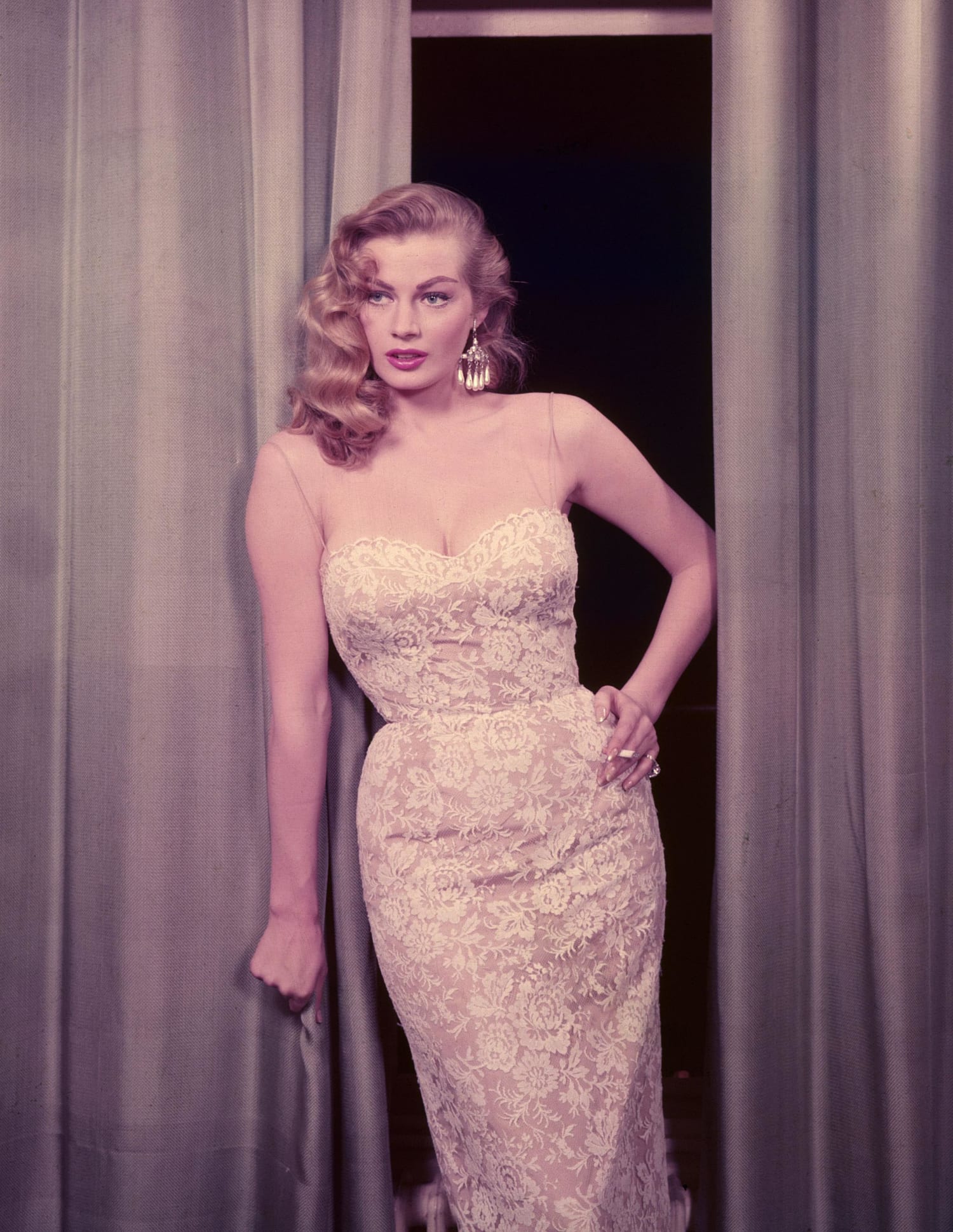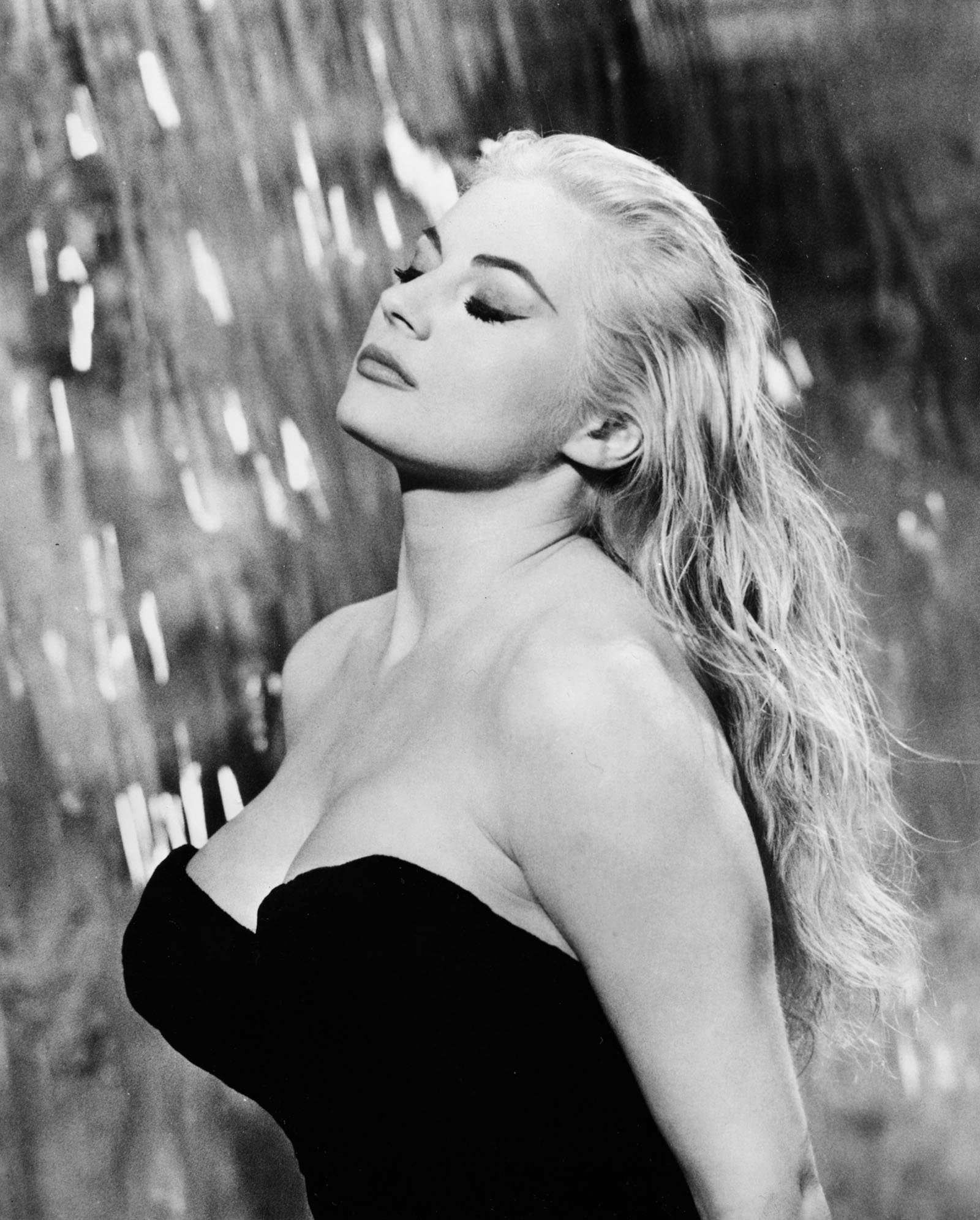Kerstin Anita Marianne Ekberg, better known to the world as Anita Ekberg, remains one of cinema’s most enduring icons—her image forever immortalized in that legendary Trevi Fountain scene from Federico Fellini’s La Dolce Vita. Yet her journey to stardom was neither straightforward nor without its trials. Born into a strict religious household in Malmö, Sweden, Ekberg defied her father’s objections and the confines of her upbringing to pursue a career that would take her from local beauty pageants to Hollywood soundstages and, ultimately, to the center of the Italian film industry Wikipedia. This in-depth profile traces Ekberg’s remarkable life—from her early years and meteoric rise to fame through her personal struggles and lasting legacy—providing a nuanced portrait of a woman whose talent, resilience, and charisma transcended borders and generations.

1. Early Life and Family Background

Anita Ekberg was born Kerstin Anita Marianne Ekberg on September 29, 1931, in Malmö, Skåne County, Sweden—the sixth of eight children in the family of Gustav Ekberg, a warehouse manager, and his wife, Alva Wikipedia. Raised in a devoutly religious household, young Anita’s ambitions often clashed with her father’s conservative expectations, particularly after she expressed a desire to become an actress. Despite his wishes that she focus on more traditional paths, Ekberg harbored dreams of the stage and screen from an early age, inspired by Hollywood films and the freedom they represented.
Growing up among seven siblings, Anita learned early about perseverance and self-reliance. She supported her family by taking odd jobs, from assisting in the family home to later modeling in local fashion shows. Though her father initially resisted her theatrical aspirations, Ekberg’s determination would soon steer her life in an entirely new direction.
2. From Local Model to Miss Sweden

Ekberg’s striking looks and natural poise caught attention when, at age 18, she entered—and won—the Miss Malmö beauty contest in 1950. That victory launched her into the Miss Sweden pageant, where she claimed the national crown despite speaking very little English at the time Wikipedia. Keen to capitalize on her newfound fame, she traveled to the United States to compete in the 1951 Miss Universe contest (then an unofficial precursor to the modern pageant). Though she did not secure the title, as one of six finalists she earned a coveted screen test and a starlet’s contract with Universal Studios—a remarkable feat for a Swedish newcomer.
3. Hollywood Beginnings and Universal Contract

Under contract with Universal Studios, Ekberg was enrolled in a rigorous program designed to transform her into a Hollywood leading lady: drama coaching, elocution lessons, dance instruction, horseback riding, and even fencing Wikipedia. Her first screen appearances included bit parts in The Mississippi Gambler (1953) alongside Tyrone Power, the comedy Abbott and Costello Go to Mars (1953), and The Golden Blade (1953) with Rock Hudson and Piper Laurie. Despite occasional uncredited roles, the studio ultimately dropped her after six months, concluding that she lacked the dramatic depth initially hoped for—an assessment Ekberg later disputed, attributing her lack of prominence to her own resistance to the studio’s rigid system.
Undeterred, Ekberg returned to Europe briefly before securing a series of supporting roles in Hollywood productions, including Valerie (1957) with Sterling Hayden and Anthony Steel, Paris Holiday (1958) with Bob Hope and Fernandel, and The Man Inside (1958) alongside Jack Palance Wikipedia. Though these films failed to showcase her fully, they laid the groundwork for her eventual breakthrough.
4. The Italian Sojourn and Stardom with Fellini

4.1 Discovering La Dolce Vita
In the late 1950s, Ekberg’s career took an unexpected turn when she moved to Italy. Her statuesque figure, golden hair, and—most importantly—her uninhibited presence captured the eye of Italian director Federico Fellini, who cast her as Sylvia in his 1960 masterpiece La Dolce Vita Time. The film’s iconic sequence—Ekberg wading into Rome’s Trevi Fountain in a flowing black gown—instantly cemented her status as an international sex symbol and cinematic legend.
4.2 Symbol of an Era
La Dolce Vita ushered in a new era of Italian cinema and reinvented Ekberg’s image. She became synonymous with the hedonistic glamour of postwar Rome, embodying both the liberation and the existential emptiness of the age. Critics praised her magnetic screen presence, and audiences across Europe and America were enthralled by the combination of elegance and raw sensuality she projected.
5. Peak Career and European Success
Following her triumph in La Dolce Vita, Ekberg consolidated her career primarily in Italy, appearing in dozens of European and co-productions. Highlights included:
-
War and Peace (1956), directed by King Vidor, where she starred opposite Audrey Hepburn and Henry Fonda—a performance that initially drew Fellini’s attention Wikipedia.
-
Blood Alley (1955), earning her a Golden Globe as Most Promising Newcomer in 1956.
-
Numerous sword-and-sandal epics and thrillers produced in Rome’s Cinecittà studios, showcasing her versatility beyond the pin-up roles she had initially played.
In 1964, Ekberg became a permanent resident of Italy, even pursuing Italian citizenship to reflect her deep connection with the country’s culture and film industry Wikipedia.
6. Personal Struggles: Marriages, Divorces, and Health
6.1 Romantic Highs and Lows
Behind the glamour, Ekberg’s personal life was marked by turbulence. She married British actor Anthony Steel in 1956; their brief union ended in divorce in 1959 amid rumors of infidelity and professional jealousy Vanity Fair. A second marriage to American actor Rik Van Nutter in 1963 also ended in divorce by 1975. Both relationships—once celebrated among tabloid headlines—ultimately underscored the challenges of sustaining a private life under the relentless glare of public scrutiny.
6.2 Decline in Roles and Onset of Health Issues
By the 1970s, as new talent emerged and cinematic tastes shifted, Ekberg found fewer film offers. She accepted minor roles—sometimes in low-budget productions—in a determined effort to revive her career. Compounding her professional woes, she endured serious health setbacks in later life: a hip injury sustained in a fall caused by one of her pet Great Danes left her wheelchair-bound, and chronic illnesses progressively weakened her Wikipedia. These struggles took a toll not only on her physical capacities but also on her mental well-being, as the public’s idealized image of her beauty contrasted painfully with her own experience of aging and vulnerability.
7. Public Reaction: Shock and Sympathy
Ekberg’s decline surprised and saddened many of her admirers. Once celebrated for her flawless figure and radiant presence, she now contended with the indignities of failing health and waning public attention. Italian tabloids documented her appearance, often unkindly, while film historians and fans rallied to honor her contributions. Retrospectives in major outlets like The New York Times and the BBC recognized her as “a symbol of elegance and femininity,” acknowledging that the actress’s human struggles were as integral to her legacy as her cinematic triumphs Wikipedia.
8. Legacy and Influence
Despite the hardships, Anita Ekberg’s legacy remains undiminished. Her performance in La Dolce Vita endures as one of film history’s most iconic moments, frequently studied in film schools and celebrated in retrospectives. Directors and actresses cite her as a pioneer who redefined female sensuality on screen, proving that a woman’s allure could convey complex emotional and cultural narratives.
Moreover, Ekberg’s life story resonates as a cautionary tale about Hollywood’s fleeting favor and the toll of beauty as both a blessing and a burden. Documentaries, biographies, and academic analyses continue to explore the dualities she embodied: strength and fragility, public adoration and private pain, artistic achievement and the struggles of aging.
9. Final Years and Passing
On January 11, 2015, Anita Ekberg passed away at the age of 83 from complications related to her chronic illnesses at the San Raffaele clinic in Rocca di Papa, Italy Wikipedia. Her funeral service was held on January 14 at the Lutheran-Evangelical Christuskirche in Rome, after which her remains were interred at the Skanör Church cemetery in Sweden—honoring her lifelong wish to return to her homeland.
In death, as in life, Ekberg inspired admiration and reflection. Her journey from a strict Swedish upbringing to international stardom, and finally to a quiet end in the Italian countryside, encapsulates the triumphs and tragedies of a life lived in the spotlight.
10. Conclusion
Anita Ekberg’s story is one of daring ambition, transcendent beauty, and resilient spirit. She shattered expectations—leaving Malmö to conquer Hollywood, then reinventing herself in Italy under the guidance of cinematic masters. Though personal struggles and health afflictions cast shadows over her final decades, they cannot eclipse the luminosity of her achievements. From Miss Sweden to Fellini’s muse, Ekberg charted an extraordinary path that continues to captivate and inspire. Today, her image on that moonlit evening in the Trevi Fountain remains a timeless testament to her talent and indomitable presence—ensuring that, long after her passing, audiences around the globe “won’t believe their eyes” at the enduring charm of Anita Ekberg.

Adrian Hawthorne is a celebrated author and dedicated archivist who finds inspiration in the hidden stories of the past. Educated at Oxford, he now works at the National Archives, where preserving history fuels his evocative writing. Balancing archival precision with creative storytelling, Adrian founded the Hawthorne Institute of Literary Arts to mentor emerging writers and honor the timeless art of narrative.
